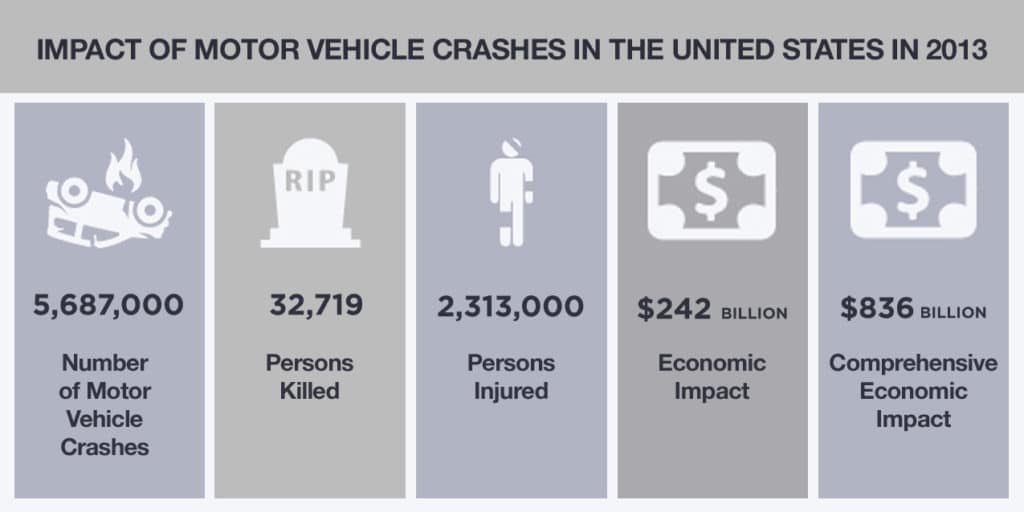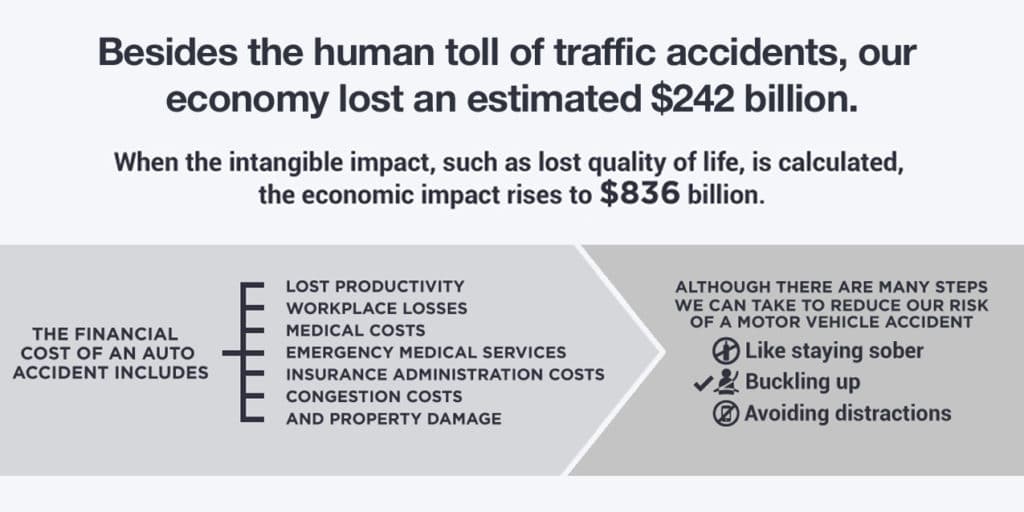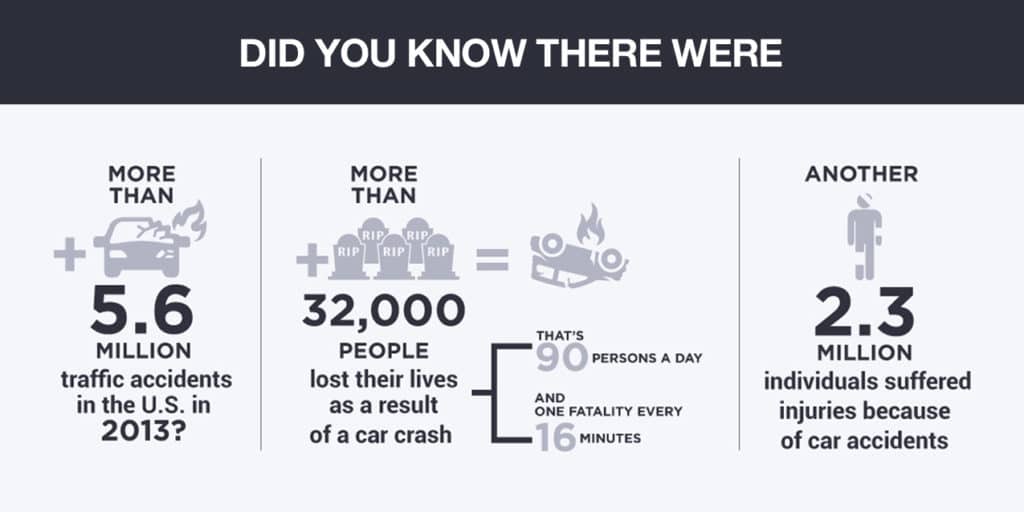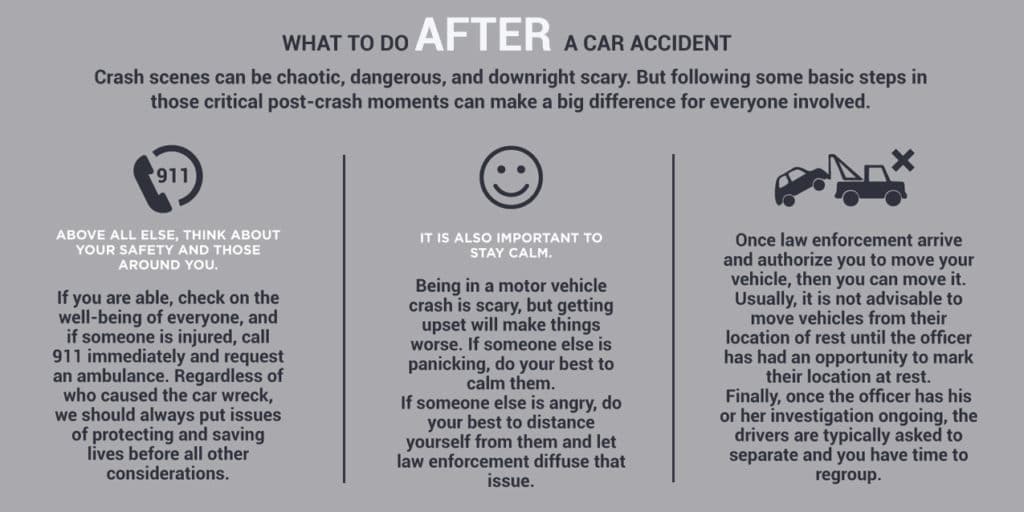Larson News
What to do Before and After a Motor Vehicle Crash
Let’s face it. Nobody wants to be involved in a car wreck.
But tragically, auto accidents are part of everyday life in the United States.
Did you know there were more than 5.6 million traffic accidents in the U.S. in 2013?
More than 32,000 people lost their lives as a result of a car crash. That’s 90 persons a day, and one fatality every 16 minutes.
Another 2.3 million individuals suffered injuries because of car accidents.
Impact of Motor Vehicle Crashes in the United States in 2013
- Number of Motor Vehicle Crashes 5,687,000
- Persons Killed 32,719
- Persons Injured 2,313,000
- Economic Impact $242 billion
- Comprehensive Economic Impact $836 billion
Besides the human toll of traffic accidents, our economy lost an estimated $242 billion.
When the intangible impact, such as lost quality of life, is calculated, the economic impact rises to $836 billion.

The financial cost of an auto accident includes lost productivity, workplace losses, medical costs, emergency medical services, insurance administration costs, congestion costs, and property damage.
Although there are many steps we can take to reduce our risk of a motor vehicle accident (like staying sober, buckling up, and avoiding distractions), the reality is that you or someone you care about will likely be involved in a car accident at some point.

That’s why it’s so important to be prepared.
Here are some simple things you can do before a car accident occurs, and some crucial steps to take immediately if you’re involved in a crash.
What to Do Before a Car Accident
Being prepared and taking some helpful steps ahead of time can reduce the surge of stress that you’ll likely feel if you’re involved in a car accident.
For example, keep a copy of your current insurance information, vehicle registration information, and a pen and paper in your car.
These are the items you will typically need to give the investigating law enforcement officer, and having them readily available on your visor or in your glove compartment will make the post-accident process much smoother.
Since these days most phones come with a camera, familiarize yourself with that feature, as it may be important to be able to take a shot of the scene of the crash, after you and all others are out of any danger.
What to Do After a Car Accident
Crash scenes can be chaotic, dangerous, and downright scary.
But following some basic steps in those critical post-crash moments can make a big difference for everyone involved.
Above all else, think about your safety and those around you.
If you are able, check on the well-being of everyone, and if someone is injured, call 911 immediately and request an ambulance.
Regardless of who caused the car wreck, we should always put issues of protecting and saving lives before all other considerations.
It is also important to stay calm. Being in a motor vehicle crash is scary, but getting upset will make things worse.
If someone else is panicking, do your best to calm them.
If someone else is angry, do your best to distance yourself from them and let law enforcement diffuse that issue.
Once law enforcement arrive and authorize you to move your vehicle, then you can move it.
Usually, it is not advisable to move vehicles from their location of rest until the officer has had an opportunity to mark their location at rest.
Finally, once the officer has his or her investigation ongoing, the drivers are typically asked to separate and you have time to regroup.
If you are a victim of this crash, it is a good time to conduct your own simple investigation.
Without getting in the way of an official investigation, take time to make observations of where things are:
- Location of skid marks
- Debris in the road
- Where the point of impact of the vehicles occurred relative to landmarks you can remember.
Pay attention to what other drivers have said or later say to you; what they say can and will be used against them in a court of law, if it comes to that.
If appropriate, take pictures of the scene and vehicles to preserve your recollection of these things.
Taking these steps before and after the collision will help reduce anxiety and give you a plan of action should you be the unfortunate victim of a crash.
Source: National Highway Traffic Safety Administration. (2015). Traffic Safety Facts. Accessed on September 18, 2015 from http://www-nrd.nhtsa.dot.gov/Pubs/812169.pdf.



